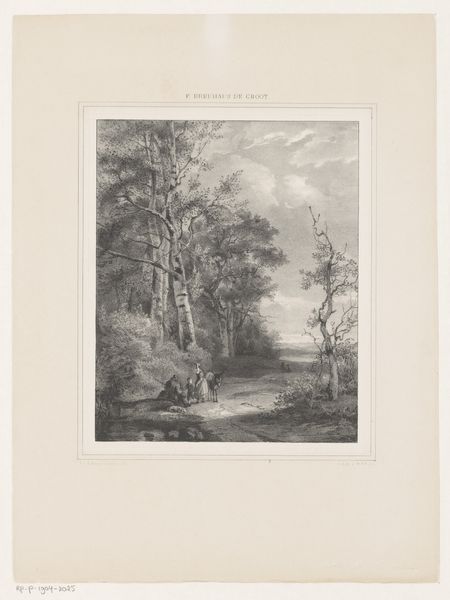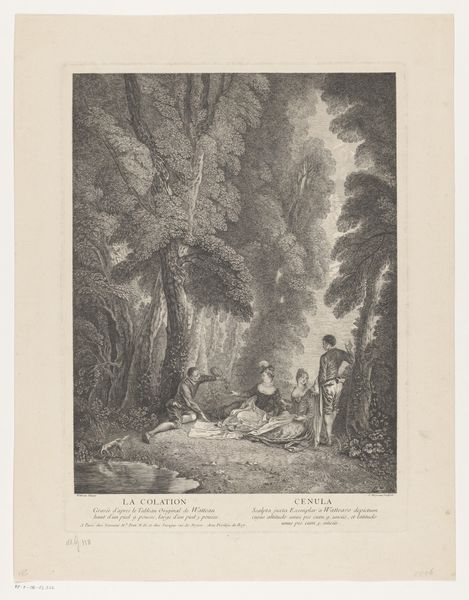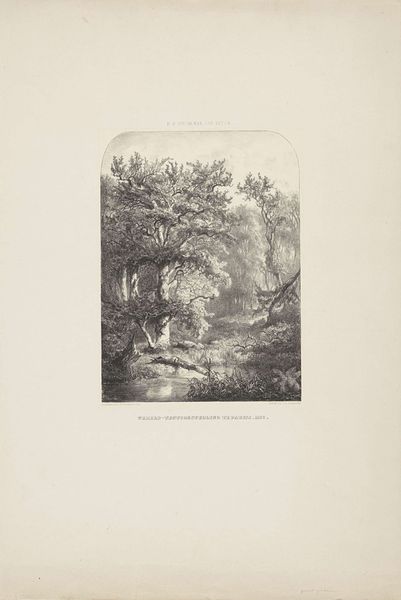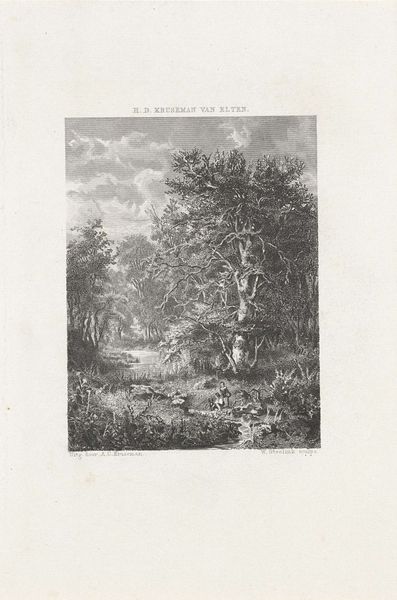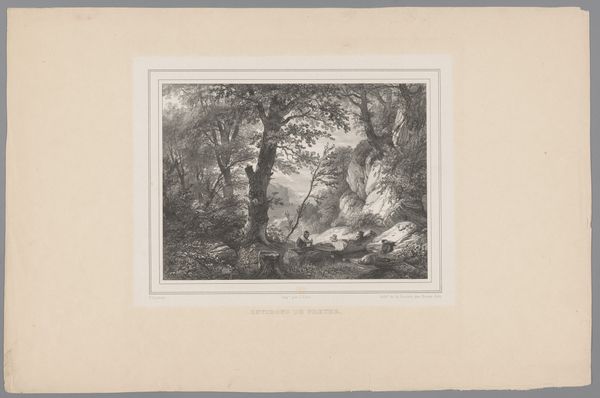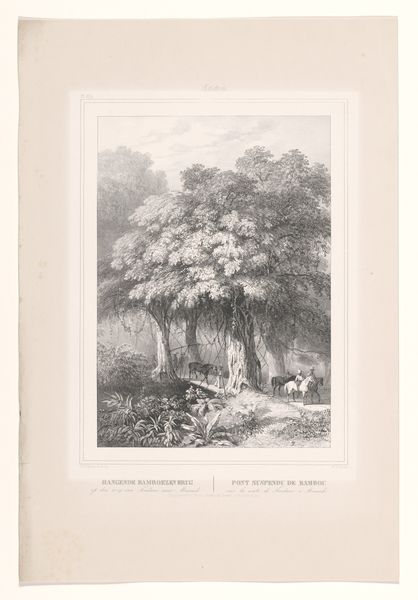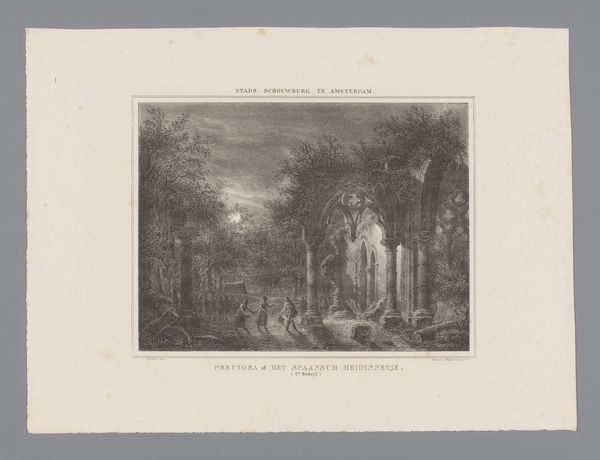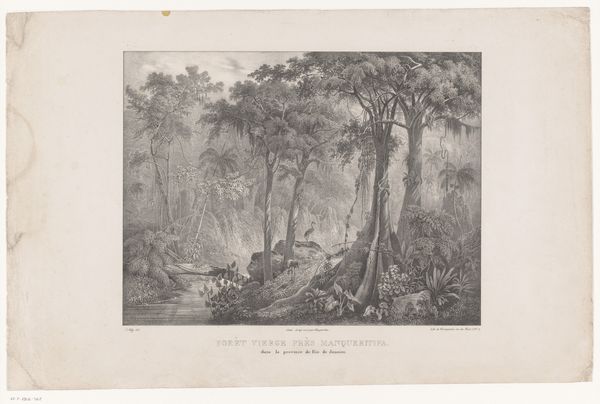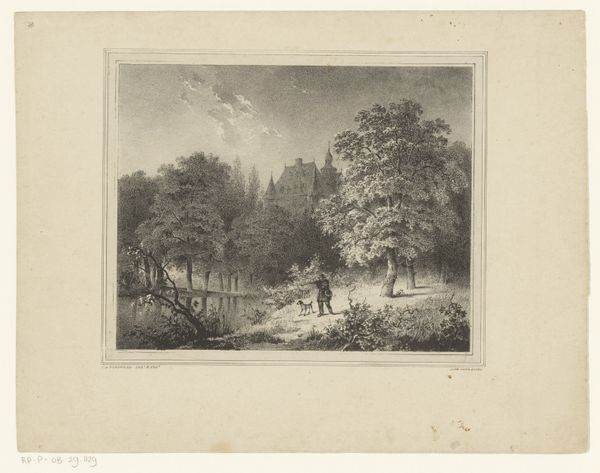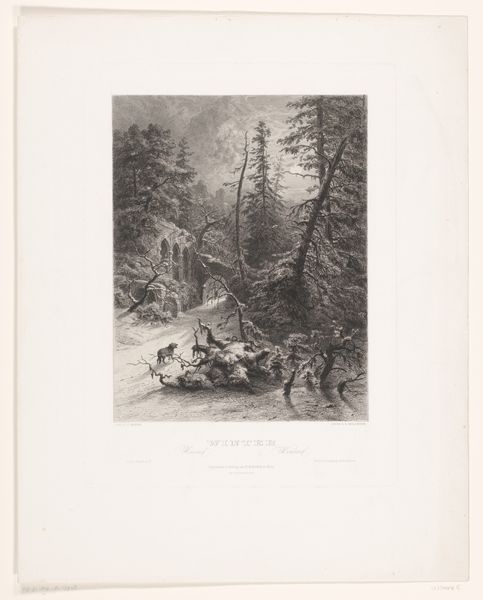
View By Moonlight, Near Fayetteville, plate three of the second number of Picturesque Views of American Scenery 1819 - 1821
Dimensions: 339 × 271 mm (image); 385 × 302 mm (plate); 563 × 385 mm (sheet)
Copyright: Public Domain
Curator: Here we have John Hill’s "View By Moonlight, Near Fayetteville," one of the plates from his series *Picturesque Views of American Scenery,* dating back to around 1819 to 1821. What strikes you initially about this print? Editor: Ooh, it's quite somber. That heavy, inky dark that blankets the scene feels almost protective around the tiny fire. What I find intriguing is the contrast, you know, how the soft moonlight seems to be fighting its way through the dense trees. I can almost feel the dampness of the night. Curator: Absolutely, that mood is quintessential Hudson River School. Let’s look at how Hill crafts that. It’s a mixed-media print, utilizing watercolor amongst other media on paper. Think about that process. Creating something that appears almost ephemeral, using techniques that ground it firmly in material reality. The way ink and watercolors behave when pressed onto the page speaks volumes about landscape rendering at the time. Editor: I agree, that process seems key. There's something about using mixed-media to capture something as fleeting as moonlight that fascinates me. Also, consider who exactly these picturesque scenes were designed to appeal to. I see a burgeoning consumer culture. I wonder about the economics behind images of an idealized nature available to a wider public through print. Curator: Good point. It really pushes us to think about the role of landscape imagery, less about faithful depiction, and more about shaping the viewer's feelings and cultural attitudes. I find it interesting how these 'picturesque views’ were commodified and circulated, creating a particular idea of America. It makes one reflect on whose narratives are prioritized and whose are overlooked. Editor: Well, looking closely at how the prints were crafted adds another layer of understanding beyond mere aesthetics. It helps contextualize and demystify. Thinking through the production and circulation adds such texture, I think. Curator: Agreed. What started as a simple viewing turns into a richer understanding, seeing beyond pretty pictures. Editor: Indeed, making this campfire scene more than a just fleeting moment captured in ink.
Comments
No comments
Be the first to comment and join the conversation on the ultimate creative platform.
